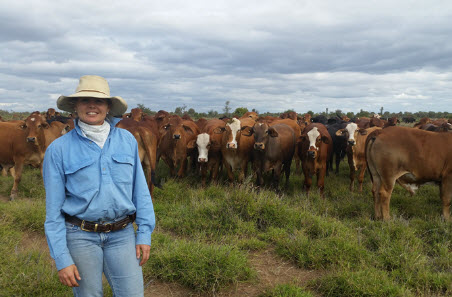Lifting calf numbers – Calf Alive symposium

Northern cattle producers wanting to find the key to reducing calf losses can make their way to the MLA-sponsored Calf Alive, a symposium at Capella, Queensland, on 24–25 November.
Producers will hear about the latest research from Australian and international specialists, as well as other cattle producers, regarding causes of calf loss and management strategies for improved reproductive performance.
Professor Michael McGowan from the University of Queensland will share results from the MLA co-funded Calf Wastage Project, and will also discuss nutritional, disease and stress management strategies to improve calf survival.
Central-west Queensland cattle producer, Bec Comiskey, is a member of the Calf Wastage industry reference group and urged fellow producers to attend.
“From both a welfare and business angle, every calf counts to us,” she said.
“In the past, we experienced high calf losses from pregnancy test to branding, so we could see room for improvement.
“By implementing strategies resulting from this research, we’ve managed to reduce those losses and I think there are good outcomes from this project that will really help our industry.”
The line-up of speakers includes international presenters Dr Frank Garry and Dr Tom Kasari, who will talk about the US experience, while Dr Dahlanuddin will explain how the issue is being managed in Indonesia.
Dr Kasari, who has a herd health management consulting practice in Colorado, said that in the US, a calf loss problem is scrutinized against a benchmark of a 90% weaned calf crop.
This allows for 5% of cows to fail to conceive or deliver a live calf, and a 5% loss from birth to weaning.
“Often the key to fewer calf losses is better heifer management,” Dr Kasari said.
“The average US producer will experience most of their herd's calf losses between the time of birth and the first seven days of life, with dystocia the most direct cause.
“Heifers remain the highest risk group for dystocia, which also increases the susceptibility of surviving calves to infectious disease.”
Professor Frank Garry of Colorado State University has been interested in the causes and management of calf mortality for the past 30 years.
“In the western US, we manage the cow reproductive cycle, cow nutrition, calving management, and infectious disease control with an eye towards improving calf survival, knowing that every additional calf raised to weaning is the financial equivalent of an additional 50 pounds of weaning weight for the next 10 calves," he said.
Frank will provide an overview of the management methods and health issues that affect calf survival in US beef herds.
“It will be very interesting to compare notes with Australian producers and veterinarians to evaluate production methods and techniques that can be used to improve producer success,” he said.



